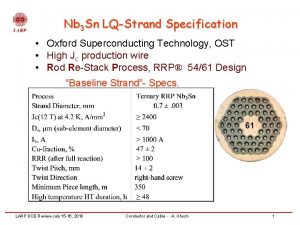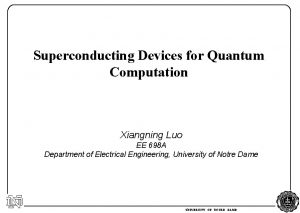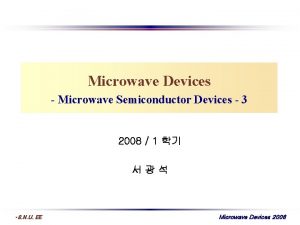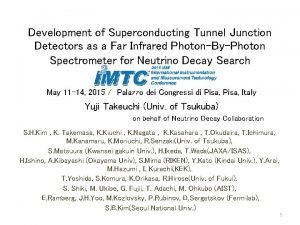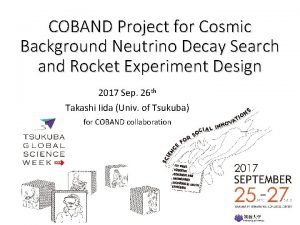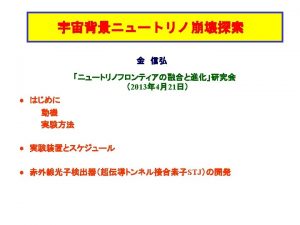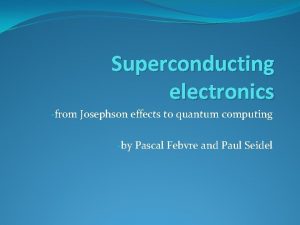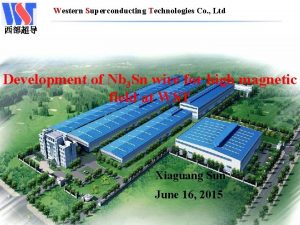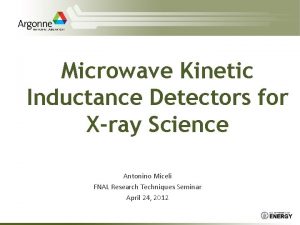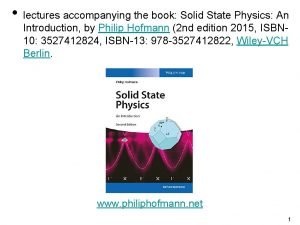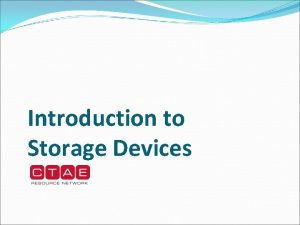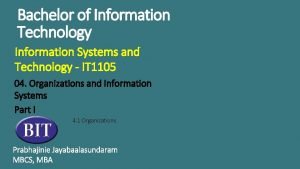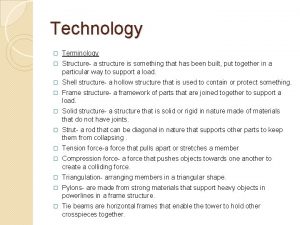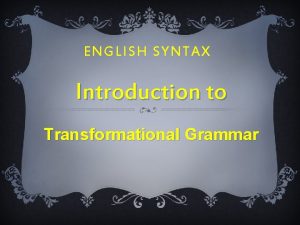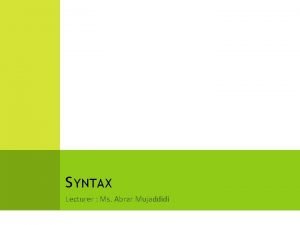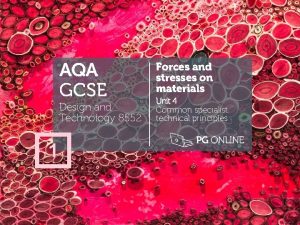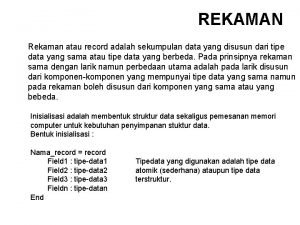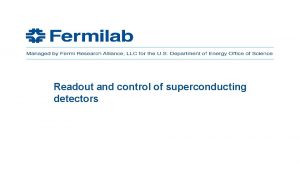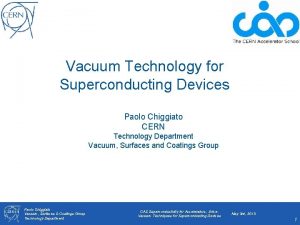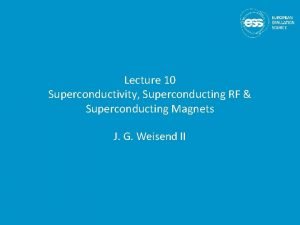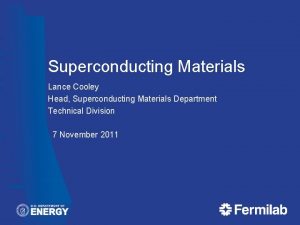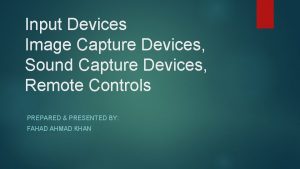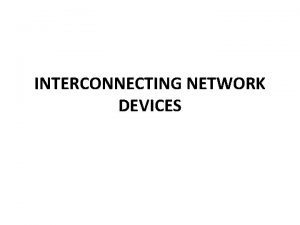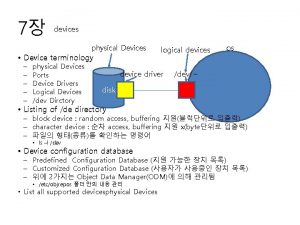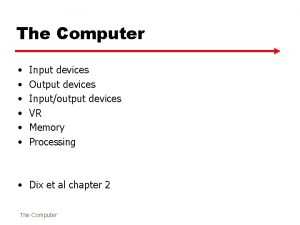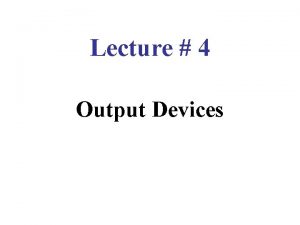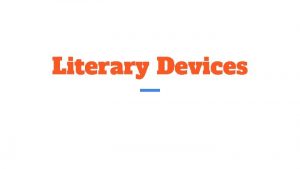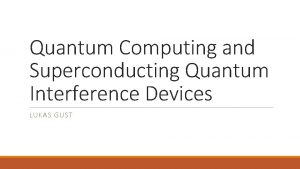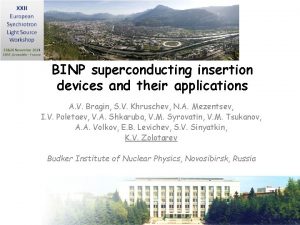Technology and structure of superconducting devices Superconducting devices


























- Slides: 26

Technology and structure of superconducting devices Superconducting devices used in systems that require large magnetic field gradient and great homogeneity of magnetic field Michał Wiśniewski Adam Mickiewicz University in Poznań, Poland

1. Introduction 2. Current lead 3. Systems with large magnetic field gradient 3. 1. DECRIS 4. Systems with great homogeneity of magnetic field 4. 1 Systems with superconducting shielding

Introduction Superconductivity in nuclear physics: 1. Spectroscopy 2. Accelerating particles 3. Ion Source Heating and cooling

Current lead Historical view: 1. Copper – several W 2. HTS with silver matrix 3. HTS with silver-gold alloy matrix – several m. W


HTS current lead

Magnetic field distribution for two conductors (1. in superconducting state, but without current, 2. is with 100 A current) The maximum field from one superconducting tape is about 0, 02 T. Magnetic field distribution for two conductors, both with 100 A current. Bmax is about 0, 04 T. Taking into account the magnetic field value generated by those superconducting tapes, One can see, that Ic. max value is decreasing about 30 -40%.

1, 2 –Copper leads 6 – Exchanger of heat on a 40 K level 10 – Textile structural element, with HTS elements of current leads on it 7 – Exchanger of heat on a 4 K level

Ion sources DECRIS Ion source is one of the most important elements of accelerators, for example nuclotron One of the most often used ion sources is ECR type ion source

ECR ion source

K R I O N

D E C R I S


DECRIS Magnetic field gradient up to 100 T/m It can work continuos for several years Using crycooler cooling causes bigger automation and it is decreasing the cost of upkeep

Because of necessity of keeping up magnetic field homogeneity, often superconducting key blockers are used. They are closing the electric circuit after supply magnets. It freezes a magnetic flux generated by electromagnet. Umożliwiają odłączenie układu zasilania przy zachowaniu strumienia magnetycznego.




Superconducting shields Superconductors can be used to shield magnetic field. Shielding can be explained by pushing up the magnetic field outside the superconductor - Meisner effect.

To increase magnetic field homogeneity opened magnetic shields are used. They are planed to be used at the electron cooling system of ion beam at the NICA project.

Results of the research, is shown in the picture:

Without magnetic shields With magnetic shields

Other devices, which uses superconducting elements: Resistance current limiter

SUPERGANTRI (planed)

In closed magnetic shields, area inside is completely shielded. This effect is used for example in superconducting current limiters.

Thank you for your attention Special thanks to: Dr Stanislav Z. Pakuliak (BLTP, JINR, Dubna) Dr Władysław Chmielowski (JINR, Dubna) Dr hab. Roman Zawodny (UAM, Poznań) Dr Henryk Malinowski (VBLHE, JINR, Dubna)
 Oxford superconducting technology
Oxford superconducting technology Superconducting devices in quantum optics
Superconducting devices in quantum optics Superconducting tunnel junction
Superconducting tunnel junction Superconducting tunnel junction
Superconducting tunnel junction Superconducting tunnel junction
Superconducting tunnel junction Superconducting tunnel junction
Superconducting tunnel junction Pascal febvre
Pascal febvre Western superconducting
Western superconducting Superconducting
Superconducting Superconducting energy gap
Superconducting energy gap Ginzburg landau
Ginzburg landau Basic literary devices
Basic literary devices Input vs output device
Input vs output device Introduction to storage
Introduction to storage Information technology organisational structure
Information technology organisational structure What is a structure in technology
What is a structure in technology Surface structure and deep structure
Surface structure and deep structure Chomsky transformational grammar
Chomsky transformational grammar S s' 's grammar
S s' 's grammar Queue is a static data structure
Queue is a static data structure Surface structure
Surface structure Forces in dt
Forces in dt Covalently bonded substances
Covalently bonded substances Union myunion structure my structure integer m
Union myunion structure my structure integer m Giant molecular structure vs simple molecular structure
Giant molecular structure vs simple molecular structure Giant molecular structure vs simple molecular structure
Giant molecular structure vs simple molecular structure Recording data meaning
Recording data meaning
